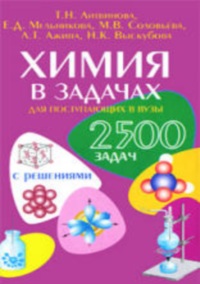P. Komi – Strength and Power in Sport (2nd Edition, 2008)
970 ₽
Автор: P. Komi
Название книги: Strength and Power in Sport (2nd Edition)
Формат: PDF
Страницы: 541
Жанр: Культуризм и Бодибилдинг
Качество: Изначально компьютерное, E-book
Strength and Power in Sport is a new addition to the Encyclopaedia of Sports Medicine series. The study of strength and power is one of the major components of sports science as the relationship between nerve, muscle and supporting skeleton is central to athletic performance. This broadly-based book examines all basic and applied aspects of strength and power in sport from the neurophysiology of the basic motor unit to training for specific activities. Contributions to this volume come from an international team comprised of leading physiologists, biomechanists, and clinicians. The broad but detailed content ofStrength and Power in Sport is directed to a wide range of disciplines including sports medicine doctors, general practitioners, physical therapists, athletic trainers and coaches, and the health related professions.
It was a rewarding pleasure to follow the success
of the first volume of Strength and Power in Sport.
Since its publication in 1991, the volume has been
reprinted several times. In addition, it has been
translated into German (1994). Despite the continuous
interest in this first volume, it became
obvious that the material had to be updated
before any additional printing or translating
could be planned. During the last 10 years, a considerable
amount of knowledge has become
available through an increasing number of studies
performed both on basic mechanisms and
applied aspects of strength and power training.
Thus, it was necessary to produce a new volume
with the latest possible information.
The editorial work of the first volume was a
challenge, but the second volume of Strength and
Power in Sport was perhaps an even more motivating
experience. We were fortunate to receive
acceptance of most of the previous authors to
revise their chapters, but new contributions from
other authors were also included in this second
volume. The recruited team now consists of 39
contributing authors representing the most prominent
scientists and clinicians, all of whose interest
have involved the various problems related
to strength and power training. But more importantly,
they have all established themselves as
world leaders in their particular research or
applied area.
Several books have been published related to
strength and power which have advanced our
understanding of the subject area. In the present
volume, we have made an effort to take a slightly
different approach to the problem. While it is
very easy to demonstrate improvement of muscle
strength with almost any method (if sufficiently
intensive), the present volume, Strength and Power
in Sport, examines the basic mechanisms and reasons
for beneficial strength exercises. In order to
give state-of-the-art information – as is the purpose
of the Encyclopaedia of Sports Medicine – a
great portion of the book is devoted to the basics
of strength and power and their adaptation. The
material is divided into five sections.
1 Definition of fundamental terms and concepts.
2 A comprehensive coverage of the biological
basis for strength and power including the
structural, hormonal, neural and mechanical
aspects. This material is presented in 10 different
chapters.
3 A detailed examination of the reasons (mechanisms)
leading to the adaptations of the organism
when subjected to various strength and
power exercises. This section covers nine different
topics ranging from cellular and neural adaptation
to endocrine and cardiovascular responses.
4 Special problems of strength and power training
including age-related changes, the potential
use of electrical stimulation, and clinical aspects.
5 The volume finishes with a more applied and
solely sports-orientated section where three chapters
cover the current knowledge of the practical
strength and power training principles, as based
on available scientific knowledge.
The way the material has been presented varies
slightly among the chapters. In some cases,
considerable depth and detail were necessary
while, on the other hand, a few chapters have
been written in a more readable and overviewtype
format. Whatever the writing style has been,
the material should be accessible to readers with
a background in the biological aspects of sport
sciences. Because of the wide coverage of the
basic mechanistic features of strength and power
training, it is expected that this volume will
become required reading for many graduate
programmes in the medicine and science of
sport. The study of strength and power is one of
the major components of sports science and an
understanding of the relationships among neural,
hormonal, muscular and mechanical factors
xii preface
is central to athletic performance as well as to
strength and power needs of other human populations.
Thus, it is believed that this second volume
of Strength and Power in Sport fulfills well the
major objectives established by the IOC Medical
Commission for this material: Importance of
understanding the basic problems in various
aspects of Strength and Power in order to analyze
different sport events and to plan objectively
training and conditioning not only of athletes but
other groups as well





Отзывы
Отзывов пока нет.